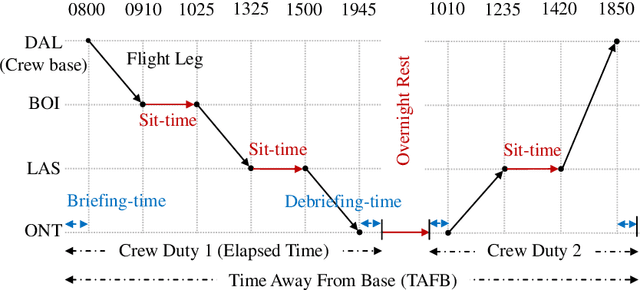A Novel Column Generation Heuristic for Airline Crew Pairing Optimization with Large-scale Complex Flight Networks
Paper and Code
May 23, 2020



For a large-scale airline, the crew operating cost is second only to the fuel cost. This makes the role of crew pairing optimization (CPO) critical for business viability. Here, the aim is to generate a set of flight sequences (crew pairings) which cover a finite set of an airline's flight schedule, at minimum cost, while satisfying several legality constraints. CPO poses an NP-hard combinatorial optimization problem, to tackle which, the state-of-the-art relies on relaxing the underlying Integer Programming Problem into a Linear Programming Problem, and solving the latter through Column generation (CG) technique. However, with huge expansion of airlines' operations lately, CPO is marred by the curse of dimensionality, rendering the exact CG-implementations obsolete. This has paved the way for use of heuristic-based CG-implementations. Yet, in literature, the much prevalent large-scale complex flight networks involving multiple-crew bases and/or hub-and-spoke sub-networks, largely remain unaddressed. To bridge the research-gap, this paper proposes a novel CG heuristic, which has enabled in-house development of an Airline Crew Pairing Optimizer (AirCROP ). The efficacy of the proposed heuristic/AirCROP has been: (a) tested on real-world airline data with (by available literature) an unprecedented conjunct scale and complexity -- involving over 4200 flights, 15 crew bases, and over a billion pairings, and (b) validated by the research consortium's industrial sponsor. Notably, the proposed CG heuristic relies on balancing exploitation of domain knowledge (on optimal solution features) and random exploration (of solution space). Hence, despite a focused scope here, the proposed CG heuristic can serve as a template on how to utilize domain knowledge for developing heuristics to tackle combinatorial optimization problems in other application domains.
 Add to Chrome
Add to Chrome Add to Firefox
Add to Firefox Add to Edge
Add to Edge